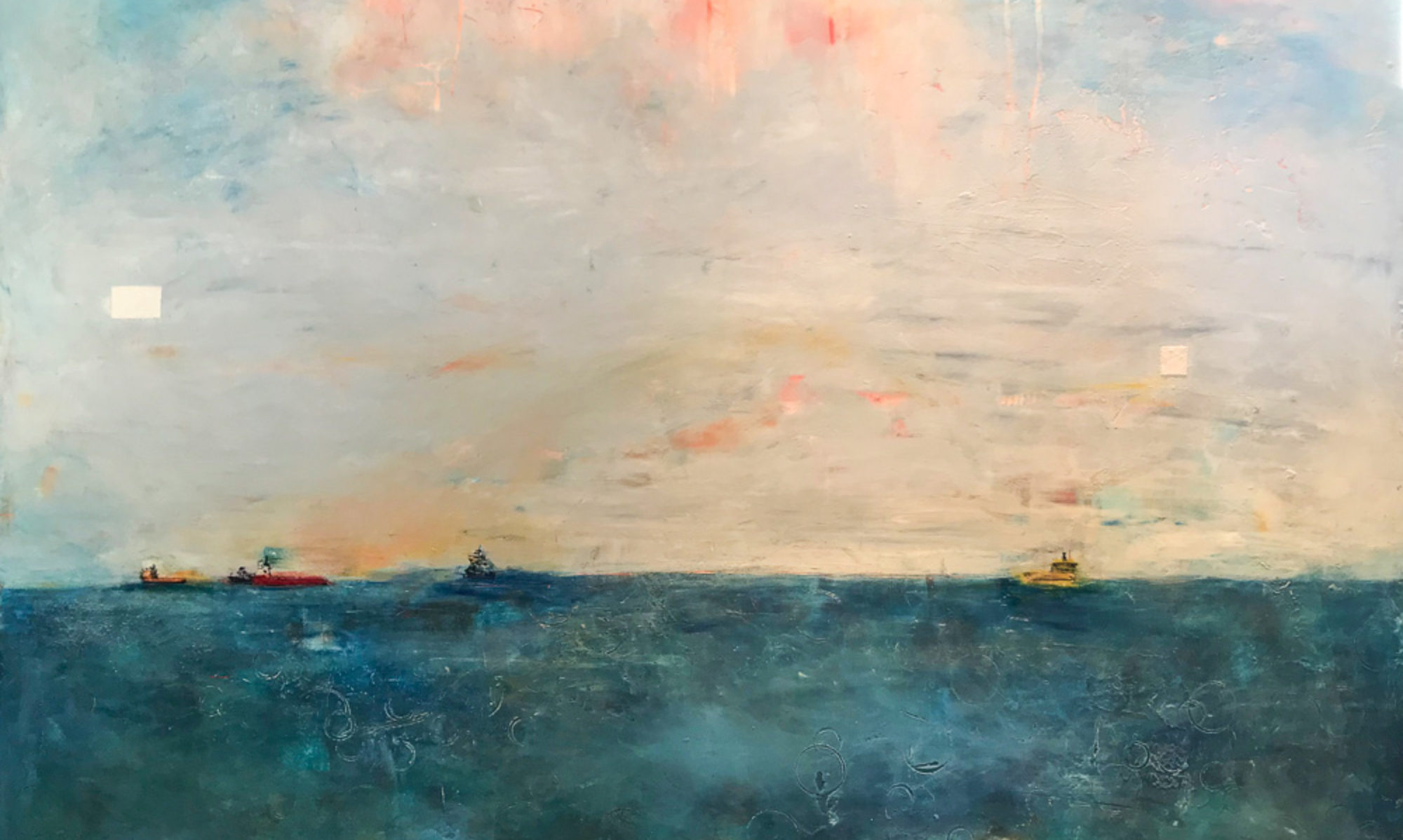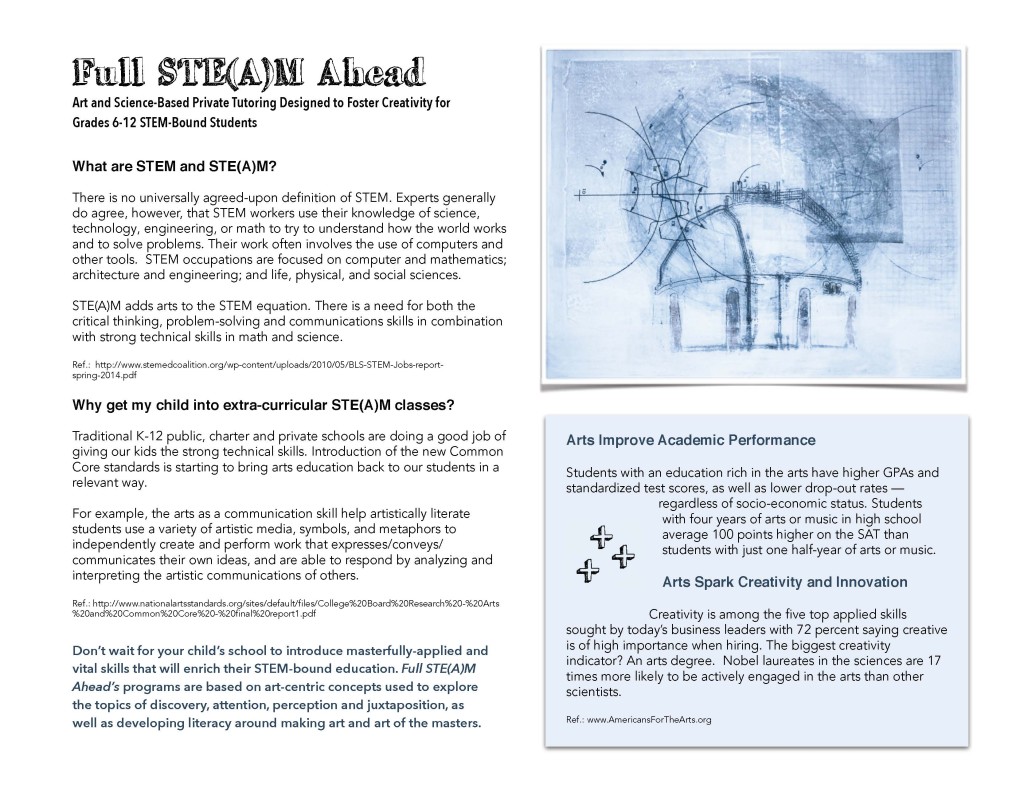Back in 2004/5, I volunteered to give art classes at the local Parks & Rec department in an after-school art. We had to get a grant for art supplies, and I had an “interesting” partner vital to the project because she lived in the district in which the rec center was located, but also a monumental pain the behind to work with. Still, we all did our best and most of all, the kids had a great time and made great art.
After three months, the over-controlling partner receded to the background, and I was able to experiment with more exciting topics and approaches, instead of teaching art the same old way. I used the framework of FAME (Fine Arts Mini-Experience)as a basis for the lessons. The local elementary schools were using FAME for teaching art in K-5 classrooms . We did exquisite corpse drawings, studied pop artists, looked at how watercolor stained canvas a la Helen Frankenthaler, and made drawings with our non-dominant hands.
A couple of years ago, I was asked to speak to mid-year engineering students at the University of California San Diego’s Jacob’s School of Engineering about engineering careers. For that talk, based on 20+ years’ experience as an engineer and mid-level manager, I used the Situational Leadership model to discuss how to approach their soon-to-be new jobs in engineering, specifically how to manage their bosses. My intention was to build on the important guidance they were getting from UCSD about business etiquette, prepping, and time management as it related to succeeding in their jobs. These are some of the best and brightest young women and men who will join the work force soon, but sadly, I found it hard to connect with them via conventional career advice.
I’m an accomplished speaker and I had done a lot of prep for the talk – inquiring with the conference organizers about what would be most relevant, and doing some research, leading me to use the situational leadership model for the talk. During the talk, I invited participation, used my sense of humor, and talked straight about the work experience as a manager of people. I got low scores on my feedback — disappointing both because I wanted to reach them to encourage them by sharing the love for my profession, and also because I always want to do my best to deliver value.
In the meantime, I have continued to teach myself art skills and have been thankful at the end of every long hard day that I had the safe harbor of art to comfort me as I painted, collaged, or simply took observational photographs. Art saves. Almost cliche at this point, but absolutely true.
I’ve also come to appreciate the more subtle aspects of art that my engineering education did not really provide – the importance of keen observation, the excitement of discovery from a “mistake,” and the pride that comes from creating even the smallest and most simple drawing. Imagine how one must feel if that creation is a bridge, or a small part in getting men on the moon, or creating a new application for the phone that helps impaired people communicate more easily?
So that brings me to my niggling feeling. I remember the day as though it was yesterday. I was at an event for Art in Action to present a book I created for the founder, Judy Sleeth, upon their 30th anniversary and for her retirement as the Executive Director. I was proud to have been asked to create the book and tears were shed when she viewed it. One of the speakers at that event was Craig Watson, Executive Director from the California Arts Council. It was from his talk I first heard about putting the “A” in STEM. As an engineer, I was already very familiar with STEM and the importance of a strong science/math/engineering education. As a self-taught engineer, I was becoming more aware of how valuable the art skills and training were.
Which leads me to today: I have this niggling feeling I’m supposed to be helping STEM-bound students learn more about art.
You could argue that I’m not the best qualified to be teaching art, or developing art-based curriculum to teach from. I don’t have any background in formal education or a teaching credential. But, I have taught a lot. I’ve taught adults through the UC Santa Cruz Extension in environmental engineering, corporate training for employees in more than 40 subjects for conformance with environmental and health/safety requirements, and development and delivery of training for data management applications to meet regulatory compliance criteria.
I’ve also taught the FAME-like program throughout my childrens’ elementary school years as a docent, and then as an instructor of a like-program for the Hayward Area Parks and Rec District Ashland Community Center. And I’ve taught art classes for people in my community in my own studio and through the Adult Day Care Center.
As I get ready for my vacation that involves some serious time on airplanes, which I find to always be extremely valuable in thinking through whatever my question-de-jour is, I know I will find the right conditions to ponder this important career question:
Should I develop and deliver programs to K-12 students to facilitate creativity and a wider understanding of scientific principles through art?
Can I contribute and connect with STEM students through putting the A in STE(A)M ?
Let’s see how I feel in two weeks about moving Full STE(A)M Ahead.


I love the A(rt) added to STEM to create STEAM!
Genius idea and yet such a necessary and natural addition.